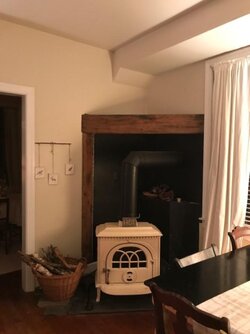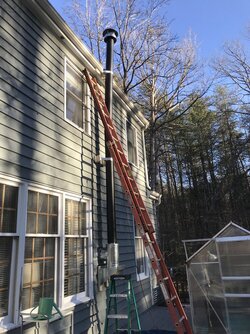So we installed a vintage Jotul F8 late last spring. This year we are using the stove. It feels like learning process as far as opening and closing the damper. Maybe it's a draft issue I'm not sure but is the damper ever supposed to be fully closed? Like at night when you go to bed should you close it all the way? My Co2 alarm has gone off twice since using this stove. Our house is a newer house so it's probably fairly air tight. I have to say it makes me pretty paranoid, it can't be a creosote issue unless after 10-20 fires you have a creosote buildup.
Thanks for your help!



Thanks for your help!







